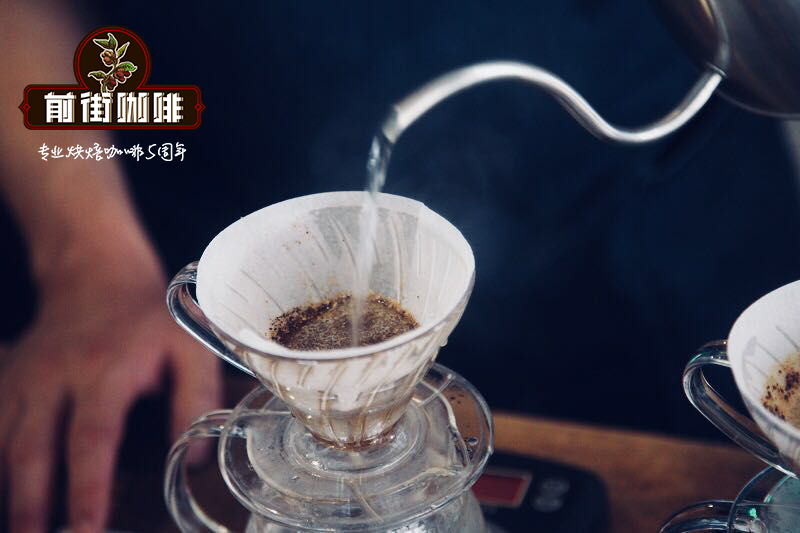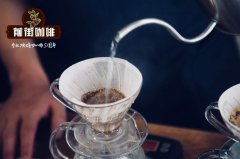How does altitude affect the flavor of coffee?
Professional coffee knowledge exchange more coffee bean information please follow the coffee workshop (Wechat official account cafe_style)

、
Batches are subdivided and cut from the land of an estate, and the scale of land between batches may vary greatly. the information of each batch of land, from the description of the environment, altitude, soil, microclimate, and so on, will determine how coffee is grown and processed.
Larger batches usually produce coffee with a higher quality stability, with a cup test score of 80-84. Smaller batches of land produce micro-or even nano-batches of coffee, which may account for only 1% or even 0.1% of tens of thousands of packets of coffee.
On the other hand, in some countries such as Luanda, Burundi and Uganda, the total output of a farmer may be less than that of a microbatch in Brazil, where some farms produce only 20-30 bags of coffee a year. This is why some small batches of coffee, such as Tanzania, may have coffee produced by multiple farmers from a cooperative.
The more information we get about the source of coffee, from the local climate to the harvest and handling preferences of producers, the more we know about coffee itself. This explains why the coffee industry is developing in the direction of "single manor", "micro batch" and "nano batch".
This micro-batch is backed by coffee grown on smaller, more specific and more precisely controlled land, which is divided into four main assessment areas:
Traceability
No one will want to drink coffee from an unknown source, and the more details of the origin can be described, the more you will know about the coffee. The certification of this coffee is also important, so you can also know that this cup of coffee is environmentally sustainable or farmer-friendly.
Smaller batches of coffee are more traceable. You can know where coffee is grown, under what conditions, and even its impact on the local environment. You start to have a little connection with coffee growers, and even ideally, buyers can work with farmers to create sustainability.
Uniqueness
Each planting and processing process will form a unique flavor of coffee (good or bad). Some coffee really have very unique flavor characteristics, some may be full of floral flavor, some may be sweeter.
If such coffee is mixed into formula beans, these flavor characteristics may be masked. On the contrary, if such coffee is presented as a single product, it can reflect its unique flavor and batch processing characteristics.
Quality
If the quality of a cup of coffee is poor or mediocre, of course there is no need to retain the regional flavor. And single origin, single manor, micro-batch, nano-batch … These coffees are usually of good quality. In addition, through the screening of small batches, it is easier to identify which are really high-quality coffee.
Important Notice :
前街咖啡 FrontStreet Coffee has moved to new addredd:
FrontStreet Coffee Address: 315,Donghua East Road,GuangZhou
Tel:020 38364473
- Prev

Do you know both micro-batch and nano-batch coffee except for a single origin?
Professional coffee knowledge exchange more coffee bean information please pay attention to the coffee workshop (Wechat official account cafe_style), quality, traceability, direct trade, reasonable price, unique flavor, good handling these are the excellent properties of individual coffee and micro-batch coffee. But if you put aside these definitions, do you know what "single origin" means? Single manor, micro-batch
- Next

What is a coffee cooperative?
Professional coffee knowledge exchange More coffee bean information Please pay attention to coffee workshop (Weixin Official Accounts cafe_style) As its name suggests, coffee cooperatives are cooperative groups composed of many coffee farmers to obtain better resources, such as better marketing resources, business opportunities, personnel training resources, etc. All members of the co-operative have to pay a membership fee and then spend the money
Related
- Beginners will see the "Coffee pull flower" guide!
- What is the difference between ice blog purified milk and ordinary milk coffee?
- Why is the Philippines the largest producer of crops in Liberia?
- For coffee extraction, should the fine powder be retained?
- How does extracted espresso fill pressed powder? How much strength does it take to press the powder?
- How to make jasmine cold extract coffee? Is the jasmine + latte good?
- Will this little toy really make the coffee taste better? How does Lily Drip affect coffee extraction?
- Will the action of slapping the filter cup also affect coffee extraction?
- What's the difference between powder-to-water ratio and powder-to-liquid ratio?
- What is the Ethiopian local species? What does it have to do with Heirloom native species?

